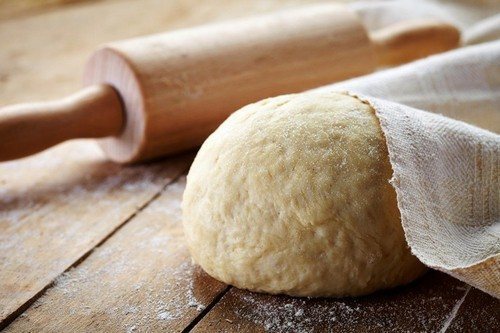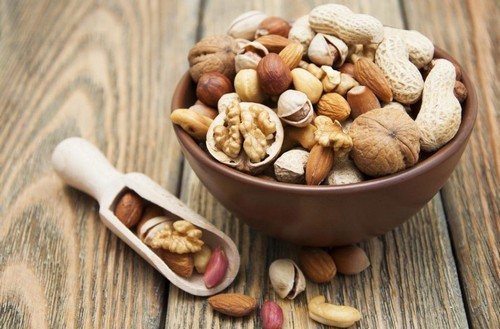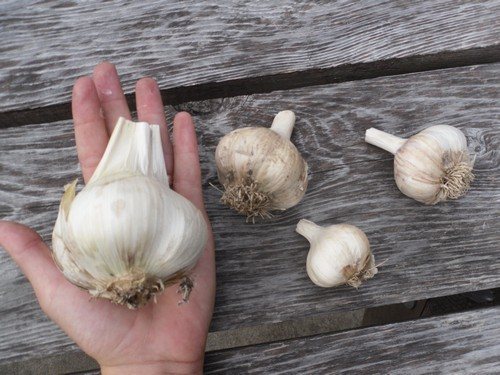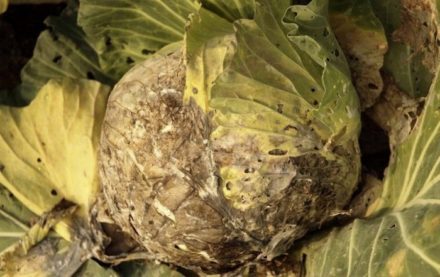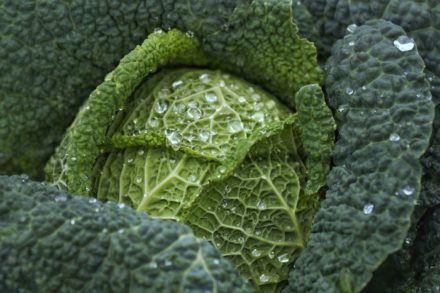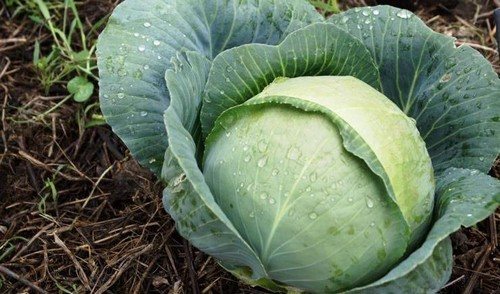Everyone knows about the benefits of white cabbage. It is rich in vitamins C and K, silicon, molybdenum, potassium and cobalt. On the contrary, the calorie content is very low, only 28 kcal, so it is suitable for dietary nutrition. To consume such a healthy product all year round, you must not only be able to grow this vegetable, but also preserve it. You can store cabbage in different ways. Read about the various methods below.
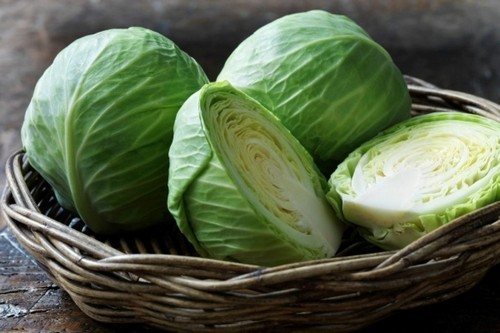
Cabbage varieties for storage
For her beauty, large size, and ruffles of leaves, she is popularly called the “garden lady.” People immediately noticed that, under the same conditions, some specimens can last until spring, while others deteriorate in the first month. As a result of selection, late cabbage varieties were selected and stored. The main characteristics of late varieties are:
- growing season 120-160 days;
- frost resistance;
- large sizes;
- dense heads of cabbage;
- intended for storage or salting.
Now agronomists are working on new species, trying to create varieties that are resistant to cracking and disease. This is very important, since the heads of cabbage lie until spring.
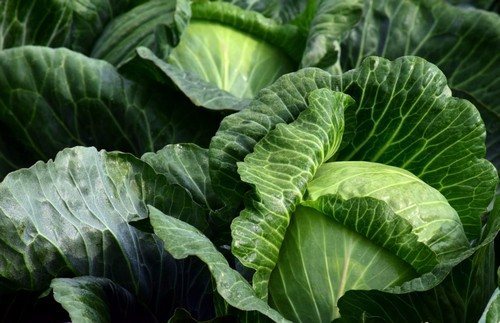
How growing conditions affect subsequent storage
The success of preservation depends not only on the variety, but also on agricultural technology and weather conditions. List of factors that have a negative impact:
- Excess water leads to premature spoilage of vegetables, this is especially noticeable after a rainy summer. You should also water as needed.Otherwise, cabbage becomes susceptible to various diseases.
- Irregular watering is reflected in the appearance: the heads of cabbage crack, which means they do not last long.
- Excess nitrogen fertilizers have a bad effect on taste and shelf life.
- Those grown on loams are stored longer than those grown on sand.
This vegetable is prone to various diseases, especially rot. Therefore, when growing, you need to ensure that the water does not stagnate. The soil around needs to be loosened. Use both organic and ready-made complex fertilizers. Nitrogen should be given according to the norm until the moment when the head of cabbage begins to set. Phosphorus-potassium can be used throughout the season.
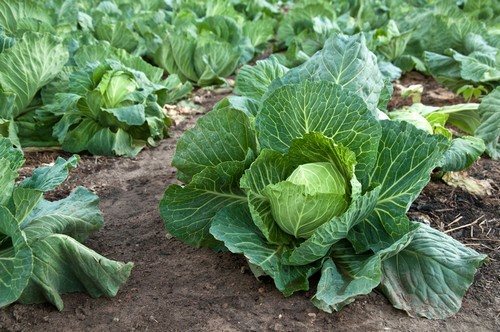
Preparation for storage
Preparation for this procedure takes place in several stages:
- Cleaning. Carried out after full maturity. It is advisable to do this in clear, non-rainy weather, when the temperature is 3-10 degrees Celsius during the day and slightly minus at night. The root is cut off, leaving 2-3 cm.
- Leaves, if they are not damaged, do not need to be removed.
- Sorting takes place in 2 stages. First you need to sort out the heads of cabbage; there is no need to wash them. Cracked, diseased, dented heads of cabbage are put aside and will be processed. The remaining healthy specimens are divided into 2 groups. Medium-sized ones are stored until spring, and small and very large ones are put forward to be used first.
- The heads of cabbage are left to pre-dry for a day. Temperature - no higher than 15 degrees.
How carefully vegetables are prepared for storage depends on how they behave in winter. They should not only be preserved, but remain juicy and tasty.

Storage features (terms, storage conditions)
There are many varieties of cabbage that differ from each other in appearance, ripening time and storage conditions. Slightly - due to taste and chemical composition. White cabbage is most often used for storage and pickling. This vegetable can be preserved not only fresh, but also salted, pickled, or pickled. From different types they make different preparations for the winter, which also need to be kept somewhere.
White cabbage
Of all types of cabbage, white cabbage is most often stored. Only late varieties are chosen. Even under ideal conditions, varieties intended for consumption will not last. Varieties that are recommended for storage: Moscow late, Amager, Stone head, Belorusskaya, Kolobok, Morozko, Kryumont, Lezheboka, Valentina, Prestige and others.
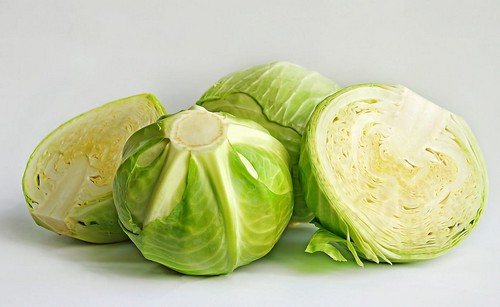
Kochan
Whole heads of cabbage can lie in a cellar or basement for a long time, subject to temperature and humidity restrictions. There are a lot of storage methods; everyone chooses the one that works for themselves. Several different techniques are described below: on shelves, in lime, clay, film, etc.
Fresh
Fresh cabbage can be stored for 6 months or even more. It can be saved in various ways. Heads of cabbage are stored in the basement, refrigerator or on the balcony. But besides this, you can store cut but unused vegetables in the refrigerator for up to a month. Part (for example, half) of a chopped head of cabbage should be wrapped in cling film and placed in the refrigerator. There it will lie for quite a long time without drying out or getting wet. Before preparing the next dish, you need to remove a little with a knife along the cut area.
Cut
A lot of chopped vegetables can be left over after pickles and other preparations. The best way to keep it fresh for 5-7 days is to wrap it in a plastic bag or put it in a plastic container. It can only be preserved longer in this form in the freezer. To prevent it from freezing into a lump, you must first freeze it in some container, and then put the frozen pieces into bags.
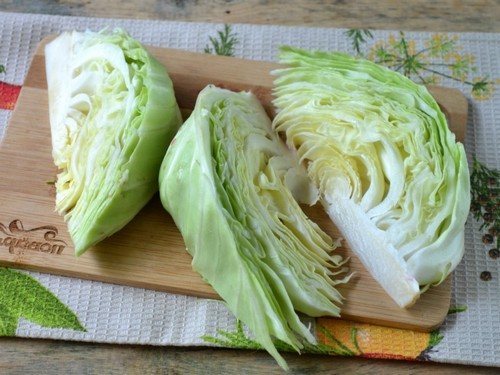
Dried
Dried cabbage is used quite widely in the household. They dry it at home, after cutting it into strips, in a regular electric dryer. In winter, mainly first courses are prepared. The advantage of storage is that the vegetable dries out greatly, decreases in volume, and therefore takes up little space. This variety can be stored in glass and plastic containers.
But from the point of view of safety and convenience, it is best to use bags made of natural fabrics: linen, cotton, bamboo. It must be stored at positive temperatures, the approximate value does not exceed 15 degrees. If the conditions of an ordinary city apartment do not allow you to find a place for proper storage, then choose a shelf located closer to the floor, where it is a little cooler than above.
Pickled
Sauerkraut differs from pickled cabbage in that the sourish taste is obtained through natural fermentation (fermentation, pickling), and not by adding vinegar. Various vegetables have been fermented in Rus' for a long time, because they understood how beneficial they are for human health. Nowadays, interest in fermented foods has increased all over the world, but white cabbage is not on this international list. Other countries know more about Korean cabbage kimchi.
First, the finely chopped vegetable is mixed with salt (not iodized!) at the rate of 1 tablespoon per 1 kg of cabbage, and then left for 5 days at room temperature to ferment in its own juice. As a result, lactic acid is formed, which gives a peculiar taste. Refrigerated cabbage is not that difficult to store. It is enough to have a damp cellar with a positive temperature that does not rise above +8ABOUTWITH.
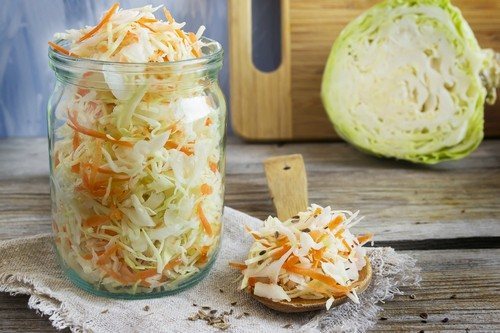
Stewed
Stewed cabbage can be stored in the refrigerator for 1-2 days, in the freezer for several months. If you want to prepare heat-treated chopped vegetables, then you need to know a few tricks:
- be sure to add vinegar to the preparations;
- granulated sugar and salt are added in higher doses compared to regular dishes;
- the addition of herbs and spices not only improves the taste, but also has a detrimental effect on pathogenic bacteria;
- jars containing preserves must be sterilized for 30-40 minutes.
In this case, the blanks can be stored for up to 2 years. The marinated one is prepared in a similar way. Salting cabbage for storage is done in different ways: hot, cold. Carrots, cranberries, garlic, onions, hot and sweet peppers, and other spices are added to the main vegetable.
Pickled
Pickled cabbage is not as healthy due to the addition of vinegar to the dish. However, you can mitigate the harmful effects of synthetic vinegar essence by adding a natural product (grape, white, rice vinegar). The most famous pickling recipe is Georgian with hot peppers, beets and garlic.
In addition to shredded cabbage, the following is placed in the jar:
- granulated sugar;
- salt;
- spices;
- chopped beets;
- vinegar;
- garlic.
All ingredients are placed “by eye”. Beetroot gives the brine a bright burgundy color, garlic and coriander give it a pleasant aroma, and hot pepper gives it a spicy kick. After 2-3 weeks, the marinated appetizer is ready. Jars of it are stored well in the refrigerator and cellar at low temperatures.
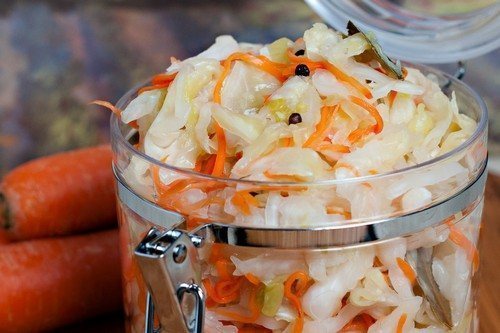
Salted
Pickling cabbage for storage begins no earlier than October, when late-ripening varieties are harvested. Each housewife settles on 1-2 varieties, which, in her opinion, have the optimal amount of sugar and a certain juiciness. Such preparations can be stored for a long time, until the next harvest. And if the method of sterilization and pasteurization was used during seaming, then 2 seasons.
Beijing (Chinese)
This type is more like a salad. Light green leaves form loose, elongated heads. Distributed throughout the world, but most used in Asia. In Korea, the famous kimchi is made from it. There are several options for preparing it, mostly very spicy. The basis of this dish is fermentation, which is essentially pickling. Beijing spicy sauerkraut kimchi can be stored all winter.
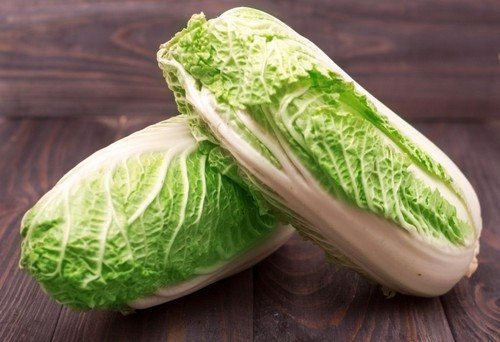
Savoy
Using this variety as an example, it is clear that most people prefer one that can be stored for a long time and that can be pickled. Neither one nor the other applies to Savoy cabbage. It is tender, loose, and is superior to cabbage in winter hardiness, sugar content and taste. But, despite such advantages, it is practically forgotten.
Colored
This is the second most famous variety. It is stored in the refrigerator, wrapped in film, for no more than a month. They are hung in a cellar or barn where the temperature is above zero. There is no need to pick off the leaves, but with this method it will remain fresh for a maximum of a month.After this, the inflorescences will become woody. Therefore, freezing the inflorescences is considered best.
Broccoli
Broccoli is a twin of cauliflower with the only difference being that it has green and looser inflorescences. They are practically not stored fresh. This species is also practically not used in conservation. The most reliable method of preserving it is freezing. They are frozen in small portions, first on a board, and then the inflorescences are transferred to a bag.
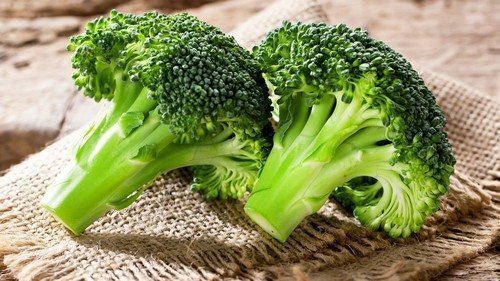
Kohlrabi
It is a thickened stem. There are also leaves, but they do not form a head of cabbage. Kohlrabi is stored in a basement or cellar if the temperature in it does not fall below 3 degrees Celsius. It is very tasty in various winter salads and preserves. The stem fruit is cut or grated. In this form, it is pickled or stewed along with other vegetables. Sterilized jars are stored all winter.
Brussels
It is also rarely grown in amateur gardens. It requires a lot of time and effort, and the result is not a very large harvest of tiny heads of cabbage. They are stewed, salted, and added to vegetable mixtures. But most often they freeze it.

Where is the best place to store
Growing a crop is half the battle. To eat cabbage all year round, you need to properly preserve it at home. Not everyone has a basement or deep cellar, so let’s look at different options in an ordinary city apartment.
In the apartment
In an apartment, forks of white cabbage cannot be stored all year round. In the fall, immediately after harvesting late-ripening varieties, until the central heating is turned on, the heads of cabbage can last for about a month. It is better to put them on the floor, so they will be cooler. Some have closets or special boxes under the windowsill. You can store it there too.But as soon as the heating is turned on, the heads of cabbage must be removed to a more secure place
In a refrigerator
Cabbage may not last very long in the refrigerator. In order for it to be fresh after a month, it is wrapped in cling film. The temperature in the refrigerator is quite suitable for this. But due to the products located there, fresh vegetables acquire an unpleasant odor, absorbing all foreign odors.
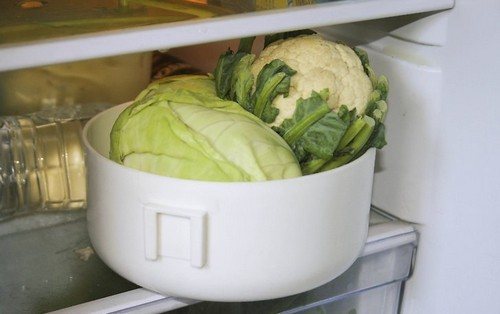
In the freezer
Those who prepare semi-finished vegetable products in advance put cabbage in the freezer. It's not difficult: cut into strips, place in the freezer on a board. Place the frozen straws in bags, release the air and place the bags on top of each other. This will take up much less space. Then it will be very convenient when preparing cabbage soup, for example, to take out vegetables that have already been cut as needed and add them to the broth. Of course, a lot depends on the capabilities of the freezer.
On the balcony
The balcony is often used for storing crops. To do this, it must be: firstly, glazed, and secondly, insulated. To monitor the temperature inside, you need to hang a thermometer.
Unlike other storage areas, the temperature on the balcony fluctuates greatly. And if it’s minus 25 outside, then it’s unlikely that what’s stored on the balcony won’t be damaged. Therefore, most often the preparations are left there until winter.
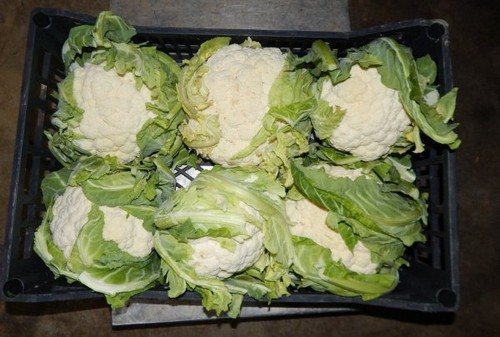
In other places
In a city apartment, where batteries operate in winter, and the temperature can be about +25ABOUTC, there are a few places where it's a little cooler. It can be;
- pantry;
- shelving in the common corridor;
- hallway;
- space under the bathroom.
You can also store jars with blanks in these places, especially those that are not subject to spoilage.Heads of cabbage wrapped in newspaper or film will keep well somewhere on the bottom shelf in the hallway for 3-4 weeks.
In the cellar
In the cellar you can store sauerkraut, salted, pickled cabbage and forks suspended by the root. If during frosty weather the temperature in the cellar drops below zero, the cabbage will freeze. To prevent this, it must be checked regularly and the temperature monitored. Optimal - 3-8ABOUTC. Before storing vegetables, the cellar must be dried and disinfected against rodents using modern means.
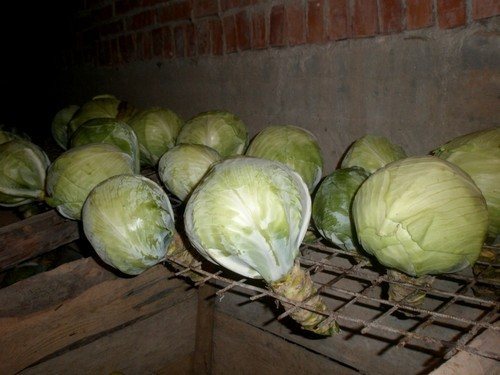
In the basement
Cans of preserves can be left in the basement on the floor without fear for their safety. It's much warmer here than in the cellar. But the most important thing is drier. Because of this, storing fresh heads of cabbage in film is preferable. The root of the fork is not cut off, but only slightly dried so that it can be shaken off the ground. There is no need to cut off the leaves: the less damage, the better. The fork itself is wrapped in shrink film and hung from the ceiling by its spine.
How to store
There are several other methods that are chosen depending on the storage location, room temperature and humidity. To measure these parameters, a thermometer and a hygrometer are used. They are inexpensive, but they give an objective picture.
In cling film
Recently, cling film has become widely used in the household. It has found very successful use in preserving the freshness of food. It is used to wrap both whole forks and cut ones. It creates a barrier to germs, odors and moisture evaporation from the surface.
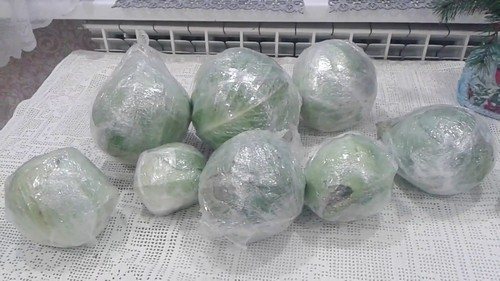
In banks
The best place to store jars with winter preparations is the cellar.The temperature there fluctuates less than in other places. In general, this mode is suitable for 2-3 years of storage. In the basement, for example, jars are stored for no more than 1 season. Stored jars are regularly checked for bloating.
In sand
Sand is a good filler for containers in which vegetables are stored. A large box is placed in the basement or cellar. Fill it with clean, preferably steamed, sand as you lay the forks. Among other things, sand maintains a certain temperature better, without fluctuations.
In clay
This method is used by those who have an excess of clay on their site. It is diluted with water to make a liquid mash. The prepared forks are dipped into it and then dried. It is possible to do this procedure twice so that both sides are completely covered with clay. After drying, the heads of cabbage are stacked on shelves or the floor, where the temperature does not rise above 15 degrees.
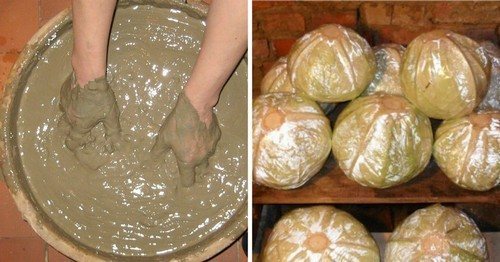
In a box or box
This is how they are stored by those who may have vegetables damaged by rodents. Cleaned from dirt, dried heads of cabbage with trimmed roots are placed in a container. The container is closed and sent for storage in a cellar or basement. The box does not need to be made too deep. There should be a maximum of 2-3 layers of forks in it. If you put more, they may rot.
In a bucket
It is possible to ferment and store cabbage in a plastic bucket if there is a mark on the container that it is suitable for food. In this case, a tight-fitting lid is required. It is more convenient to ferment cabbage in a bucket than in a jar. And it must be stored under the same conditions, that is, at a temperature not exceeding 7-8 degrees.
On a shelf, rack
Depending on where the shelves are located, the shelf life and conditions will be different.Shelves in the basement are suitable for placing forks treated with a protective layer (clay, paper, film) on them. This way they can stay fresh until spring. Heads of cabbage can be stored on balcony shelves for a short time, until frost sets in. It is convenient to place jars of preserves on shelves in the basement.
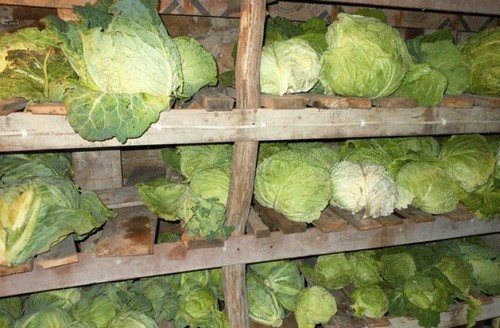
Aweigh
The “by weight” method is suitable for those who have rodents in their crop storage areas. The fork is hung from a beam or hook on the ceiling by the root, secured with a strong rope. The knot must be tied so that the heavy cabbage does not slip out of the loop. This method is suitable for those rooms where there is a lot of space so that the heads of cabbage do not touch each other. The advantage is that it is very convenient to check vegetables for diseases and spoilage.
In paper
Paper is a cheap material to help with storing vegetables. It creates a protective barrier for microbes, it is easy to replace if spoiled, it absorbs excess moisture and, at the same time, protects the heads of cabbage from drying out. Paper of various thicknesses is used: from tissue, newspaper, to thick gray. Each head of cabbage is wrapped in paper and stacked on top of each other.
Pyramid
Storing in a “pyramid” or in stacks, rather than in a closed box, is convenient because air circulates between the heads of cabbage, which prevents the accumulation and proliferation of pathogenic microbes. You can stack both “naked” heads of cabbage and pre-processed or wrapped in paper. The outside of this structure is clearly visible, which is convenient for monitoring its safety.
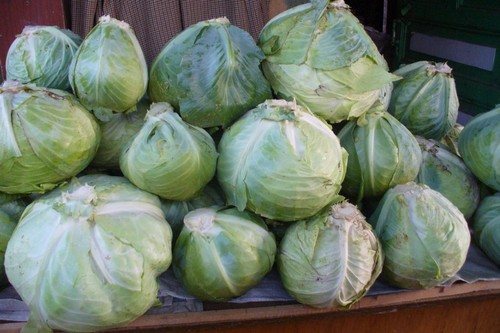
In chalk or lime
This method is suitable for varieties susceptible to various types of rot or fungal diseases.The heads of cabbage are powdered with chalk or slaked lime. In this form they are placed on shelves, in a cellar or basement. They can also be stored for a short time (about a month) at a temperature of 15 degrees in the corridor, pantry or on the balcony.
Neighborhood with other products
Cabbage can coexist in the cellar or basement with almost all vegetables. Fresh heads of cabbage are stored until spring and do not affect the storage of potatoes, carrots, onions or garlic. But fruits, apples, pears, grapes, are best stored in a separate room. Cabbage negatively affects the taste of fruits.
Possible problems
Diseases may not appear immediately. During planting, the forks may look quite healthy. High humidity provokes the development of pathogenic microbes and bacteria. Only completely healthy heads of cabbage, which visually show no signs of disease, are selected for storage. Any small spot of rot can spread to other specimens in a matter of weeks. If possible, choose varieties that are genetically resistant to diseases and cracking, since cracks provoke the development of sores.
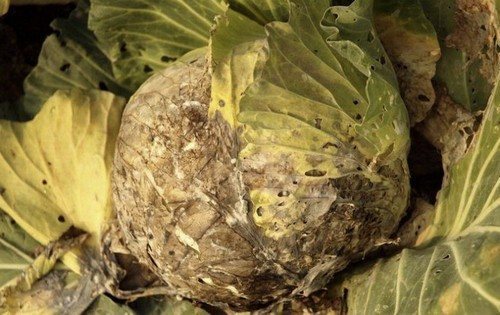
Black spots (necrosis)
Under no circumstances should heads of cabbage that have black spots on them be stored. This is the cabbage mosaic virus. It can appear during the growing season, after it, or already in winter. You can eat such heads of cabbage after cutting off all the affected areas. If during storage the virus appears on one head of cabbage, it must be removed immediately. Most likely, the disease will soon appear on all heads of cabbage. The disease has no cure, and it cannot be prevented by tearing off the affected leaves.
Rot
To prevent diseases, the place where vegetables will be stored must be disinfected. Rots that multiply on cabbage are divided into types:
- white;
- gray;
- dry;
- weeping.
If the heads of cabbage are checked regularly, then the spread of rot can be prevented by removing diseased heads. The cellar is fumigated with a sulfur candle every year. The shelves must be wiped with chlorine-containing agents or laundry soap. If the heads of cabbage are stored in boxes or boxes, then they are annually exposed to the sun or painted with oil paint.
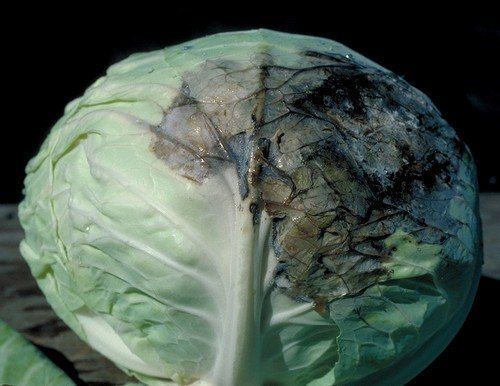
What to do with substandard products
Substandard products cannot be sent for storage. The point is not that the heads do not meet the standards. But that any cluster of dots or a small wet area is a disease that can spread to other specimens and destroy the entire crop. In order not to miss a diseased specimen, a visual inspection in sunlight is enough. All affected heads should be eaten first.
Helpful tips
There are many small tricks that affect the safety of heads. In general, they allow you to get a "second" harvest in the spring. Here are some of them:
- Heads of cabbage intended for storage should not be thrown away;
- Any dent or crack may indicate the onset of a disease;
- An unknown variety should not be stored;
- Medium-sized heads of cabbage are best stored;
- Diseases are transmitted not only by contact with vegetables, but also through the air.
By following these rules, you can eat fresh produce from your garden all year round.
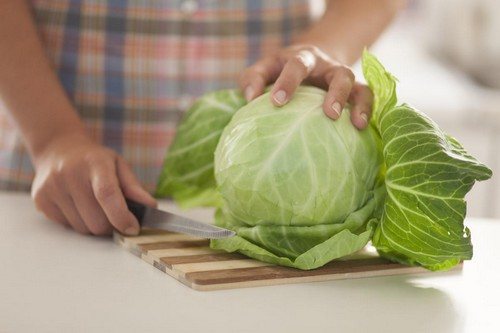
Conclusion
To preserve cabbage, you do not necessarily have to have ideal conditions. A suitable room where the temperature is maintained at 5-10 degrees throughout the year is enough. Small secrets are only an addition to the general recommendations.


